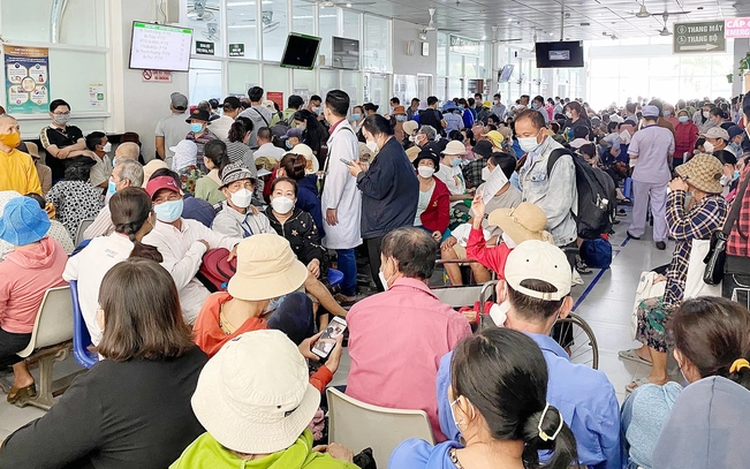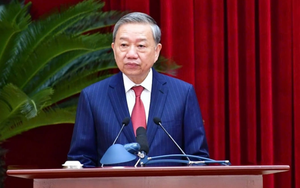
A hospital in Ho Chi Minh City is packed with patients. Photo: Xuan Mai / Tuoi Tre
Hospitals and health leaders have begun implementing a strategic plan to prevent systemic overload.
According to the municipal Department of Health, the merger will raise the city’s annual outpatient visits from over 42 million to more than 51 million, and inpatient treatments from 2.2 million to over 3.8 million.
With this spike, the city’s health system will be responsible for delivering over 30 percent of the nation’s outpatient care and over 23 percent of inpatient treatment.
Hospitals prepare for surge
Dr. Tran Van Song, director of 115 People's Hospital, said that the hospital handles around 4,000 outpatient and 1,600 inpatient cases daily, with nearly half of those coming from other provinces.
Dr. Song emphasized that the healthcare infrastructure in Binh Duong and Ba Ria-Vung Tau has seen considerable investment in recent years.
The merger, set to be complete in August, could enable better access to high-level medical services across the region.
The hospital has long supported several hospitals through training and technology transfers in a bid to establish more specialized medical centers, he said.
Tu Du Hospital, one of Vietnam’s top facilities for obstetrics and gynecology, is also bracing for increased demand.
Currently seeing between 3,000 and 3,200 outpatients and treating 1,400-1,500 inpatients daily, the hospital anticipates a jump in patient numbers after the merger.
Dr. Tran Ngoc Hai, director of Tu Du Hospital, said they are proactively reorganizing operations to accommodate more pregnant women, mothers, and children after the merger.
He highlighted that the hospital has been providing professional training for 32 provinces in southern Vietnam for years, including Binh Duong and Ba Ria-Vung Tau.
Plans are already underway to propose a second facility for Tu Du Hospital in Can Gio District.
“We will organize and expand our operations to maintain the same high level of care for women and children post-merger,” Dr. Hai stated.
Long-term strategy: new campuses, medical clusters
Director of the municipal Department of Health Tang Chi Thuong underscored the importance of a long-term strategy that includes building second and third campuses of major hospitals to reduce the pressure on tertiary hospitals and drive up the growth of medical tourism.
Dr. Thuong also emphasized the need to revise urban healthcare planning, including the establishment of new specialized medical clusters in Binh Duong and Ba Ria-Vung Tau.
Additionally, the number of hospital beds and medical workers should be adjusted to suit the expansion.
Besides, the Ministry of Health has instructed local authorities to ensure uninterrupted delivery of essential medical services throughout the reorganization process.
Any restructuring of public healthcare units must maintain core services, while it is necessary to merge or dissolve inefficient or redundant units.
Infrastructure gaps in new areas
Nguyen Tan Ban, director of the Ba Ria-Vung Tau Department of Health, acknowledged that the merger presents both opportunities and challenges.
While the province boasts modern infrastructure, including two general hospitals and four specialized hospitals, there are shortcomings in medical expertise and availability of high-level specialized services.
The quality of some district-level health centers remains low, while there is a lack of advanced services in fields like oncology, cardiology, neurology, and orthopedic trauma, said Dr. Ban.
He proposed that after the merger, skilled doctors and nurses from Ho Chi Minh City rotate to hospitals in the merged areas.
Investments in high-tech equipment and telemedicine capabilities, coupled with incentives for medical staff, would also be necessary.
Also, he urged the development of satellite hospitals to serve residents locally and reduce the burden on major hospitals in the city.
Vietnam is working to reduce the number of provincial-level administrative units.
After the merger, the country will have 34, including 28 provinces and six centrally-governed cities.
In May, the all-powerful Politburo ordered the merged provincial administrative units to be operational before August 15.



Max: 1500 characters
There are no comments yet. Be the first to comment.